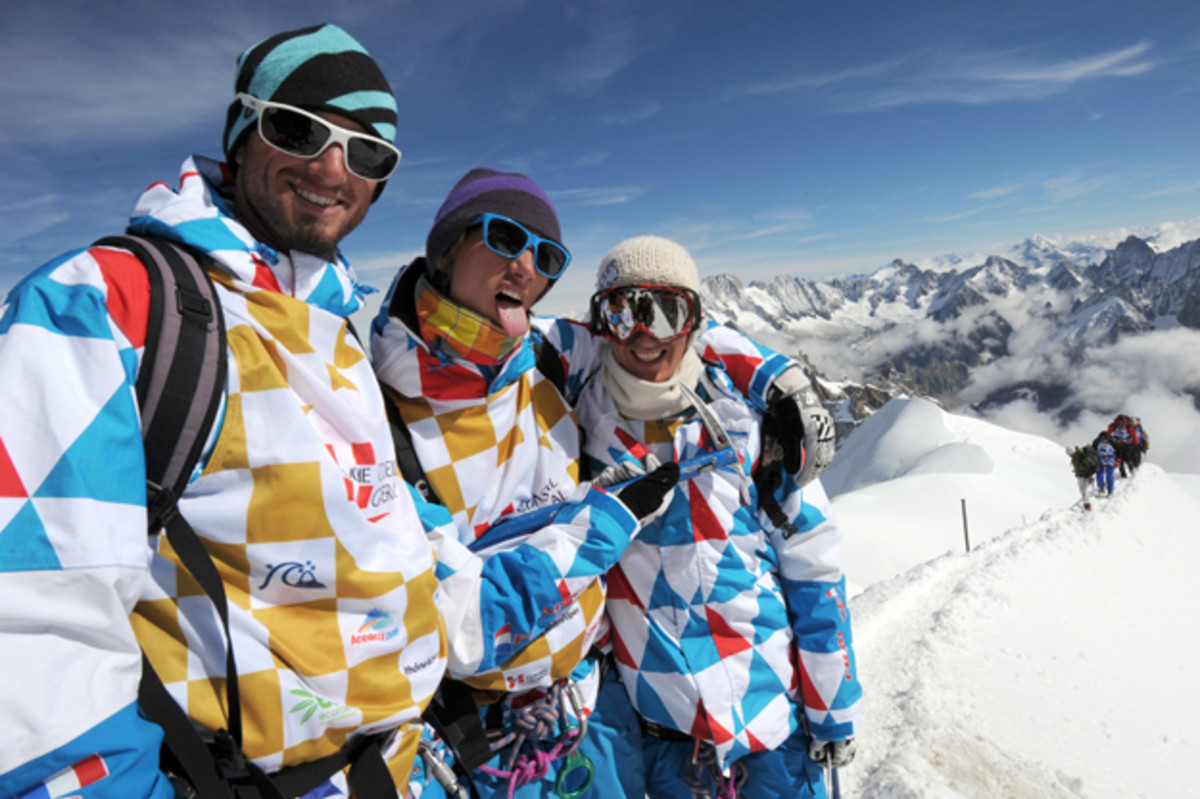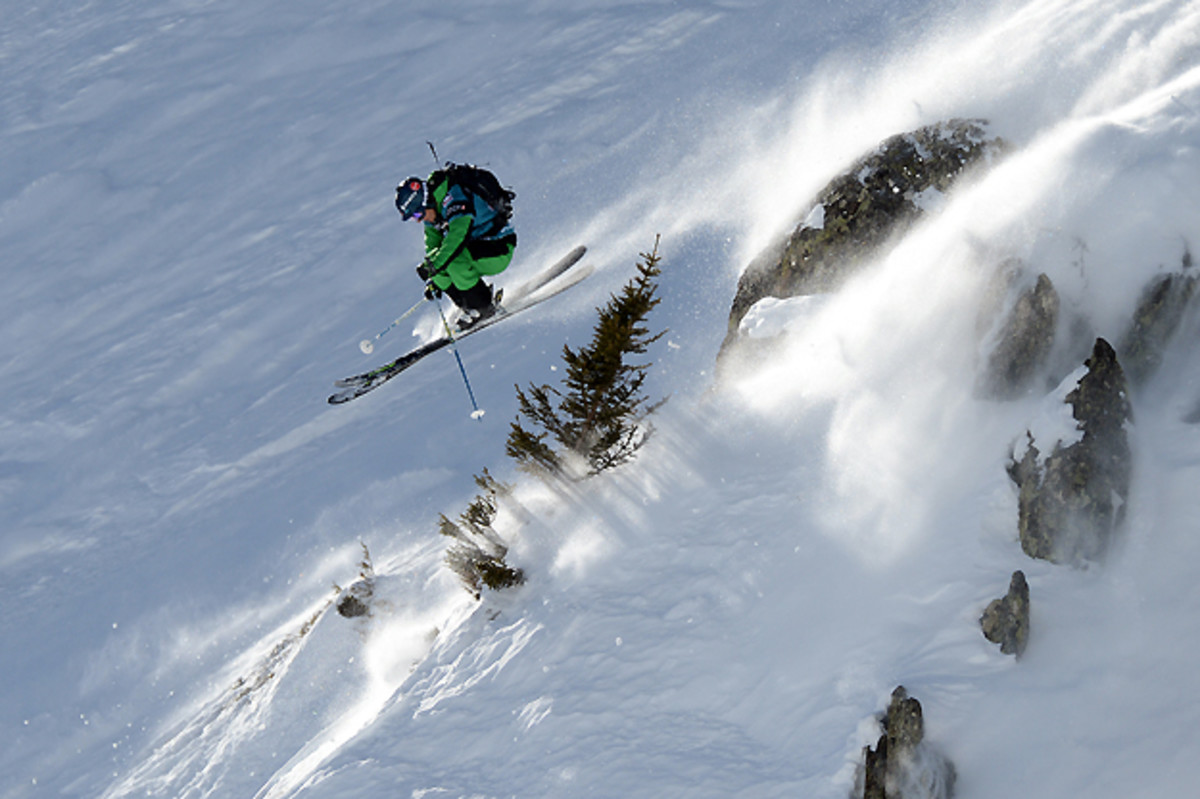Top of the World: Chamonix boasts unrivaled terrain, culture and danger

In the mid-1920s, Paris was a center of intellectualism as a generation of writers, artists and expatriates—some of whom were veterans of the bloodiest conflict in modern history—shared ideas and defined a genre. Literary luminaries like Gertrude Stein, Ernest Hemingway and F. Scott Fitzgerald were among them.
A century later, a mountain town in France is again a culture-defining center, but the genre is alpinism, be it climbing, skiing or B.A.S.E. jumping. Chamonix, in the shadow of Mont Blanc has come to define modern mountain culture.
The reason is simple: the terrain is unparalleled, with peaks rising 15,000 feet off the valley floor, creating the border between France, Italy and Switzerland. Jagged spires decorate the skyline while glaciers keep many of them white year-round. These glaciers are interrupted only by sharp folds called crevasses, adding to the challenge of the terrain.
“There’s nothing in the continental U.S. that compares,” says Nathan Wallace, a California-raised skier who’s lived in Chamonix for the better part of 15 years. He says it’s not just the big mountains that bring skiers here on pilgrimage, but the access.
A cable car named for the mountain it traverses, the Aiguille du Midiwas built in 1955 and still boasts the highest vertical ascent of any tram in the world, rising over 9,000 feet.It was designed more for the Everyman to see the Alps. But it was a windfall for skiers and riders, as it culminates at the start of the Vallée Blanche, a 9,000-foot run and the starting point to access Mont Blanc as well as any other project mountaineers can imagine.
How Lindsey Jacobellis fell in love with snowboarding again
That access comes at a price. Some in the skiing community have called the region the “death capital,” citing the sheer number of fatalities. In 1996, acclaimed Canadian ski mountaineer Trevor Petersen, who helped popularize the extreme skiing movement, died in an avalanche while descending the exit couloir on the Glacier Rond. In 2006 American Doug Coombs was killed trying to save fellow mountain guide Chad VanderHam in La Grave, three hours from Chamonix. And this year, in a heartbreaking episode, Oregonian Dave Rosenbarger, who’d skied most of the toughest routes in Chamonix, was swept to his death on the Italian side of Mont Blanc.
It’s a hard place to earn your stripes, with little margin for error. That’s why there’s a pecking order amongst the locals, similar to a difficult surf break, where one slip-up not only endangers the person who made the mistake, but those around them as well.
“There’s a lot of territorialism or localism,” says Wallace. “I saw that really quickly and did my best to spend as much time as I could with locals despite language barriers and be part of what they were a part of and just be respectful. When people just show up on the tram you’ll get others telling them to take it easy, know where you’re going, be careful with your choices.”

Even though he’s descended most of the wildest lines in the region, Wallace is humble, quick to give credit to French ski mountaineers and their accomplishments, like Marco Siffredi, one of the valley’s native sons. A snowboarder and mountaineer, Siffredi knocked off plenty of firsts in the Valley including the first snowboard descent of Nant Blanc on the AiguilleVerte, a line averaging 55 degrees with steeper sections. He was the first to snowboard from the summit of Everest and disappeared during his second attempt there in 2002. Or Jean Marc Boivin, who helped invent extreme skiing without really knowing it with outrageous first descents like the Aiguille du Midi’s Frendo Spur.
In Europe, the attitude is much different. There’s no litigation following a mistake off-piste. No rules or gates or any barriers to the imaginations of extreme ski mountaineers.
“That’s what draws people there,” says Matt Hansen, an editor with Powder magazine. “People have the freedom to do whatever they want. It’s such a huge, dangerous place, it attracts a certain individual who wants to express themselves creatively on the snow or rock or in the air, and no one is going to tell them no. If they die doing it that’s the way it is. It’s true freedom.”

The projects available to ski mountaineers are endless. Perfect days can come in myriad of ways. And they don’t always have to be death-defying.
“The days that keep you here?” asks Wallace. “It snowed a meter or two overnight, there’s no one in the tram and you’re with four of your buddies. It’s cloudy all day and you’ve been skiing near the valley floor. It clears up at 3:30 in the afternoon and you get a 9,000-foot run at sunset. It’s better than any heli-skiing in the world.”
Then, when avalanche conditions improve, so do the options for steep descents that include ski touring with mixed ice and rock climbing, followed by rappelling and 1,000-meter lines into Switzerland and Italy using public transport for shuttles. The options are endless—and they’re all discussed and dissected each evening in Chamonix’s bars and eateries.
“People are doing really cool things, it’s so fun and captivating to be around,” says Caroline Gleich, an accomplished ski mountaineer based out of Salt Lake City who spent a month in Chamonix last winter. “You’re around the most exciting people, it’s like a drug. You want to stay at the party and keep doing the drug. The village is full of counter-culture rebels who aren’t afraid to break the rules because there are none.”
